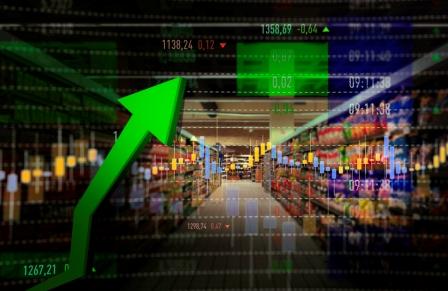The Indian market has reached a point of conjunction where the future outlook is very optimistic at a time of high valuations and inflation, which may have factored a good part of the enthusiasm. Market and commodities’ prices have soared to new highs. We cannot expect the rally to maintain the same glory of low risk and high return as in FY21. Covid case is not the next headwind but rising inflation. It is the time to review your portfolio and develop a balanced basket of equities.
Rising world inflation could be a threat to the bull market
Noticeable effectiveness of vaccination and huge fiscal expenditure plans are presenting a very optimistic view on the future of the economy.
Source: ourworldindata.org, intrading.com, Geojit Research
International metal prices of steel, copper, and iron ore are at new cyclical highs. These are much higher than the peak touched in 2011. On a YoY basis, key metals prices are up by 90% in EMs courtesy the fall in supply owing to capacity and transportation constraints due to COVID. But it is also feared that some of these constraints will continue given long-term cuts in China’s capacity due to pollution norms and high demand for government spending. Prices may remain elevated due to the combination of supply constraints, and big fiscal and monetary stimulus announced across the world leading to high capital and infrastructure expenditure. If this sustains it will be a big blow to the global market leading to high inflation and fall in project feasibility.
Inflation has already started to increase. Example, CPI in US increased to 4.2% in April, a 10 year high, presumably due to low base and is expected to decline in the future. Inflation expectation and bond yields in India have also increased. Still, the world central banks are not concerned about the increasing inflation and are maintaining an accommodative stance.
Equity market may get polarized
But markets fear inflation, anticipate more inflation than forecasted by central banks and the US Government’s 10-year yield is in uptrend. In spite of these risks, the level of correction in the world and Indian markets could be limited because of accommodative policy and plausible correction in metal prices in the short to medium-term. Limited inflation is positive for corporate’s revenue and India should not be heavily impacted as it is not a big importer of heavy metals. But high valuations and hidden NPAs cannot be avoided which could lead domestic equity market to be a polarized market. There could be a slowdown in global and domestic economy in future due to inflation.
Today’s core requirement is to have a well-balanced portfolio
Understanding the challenging economic situation, the need of the hour is a well-balanced portfolio in sync with the everchanging market conditions. A periodic check is the key to having a good portfolio. On a yearly basis, the market performance has been good in spite of the pandemic. The main contributory factors for the performance are fiscal and monetary stimulus, and some sectors being beneficiaries from the pandemic are expected to continue. IT, Pharma and Chemicals have a better outlook due to higher and sustained demand in India and overseas. Evergreen sectors like FMCG, Telecom, E-commerce and Green initiatives will perform well due to stable and high demand, and being the future investment destinations. Lately, we are also noticing that old economy sectors like Infra, Metals (short-term correction is likely due to fall in metal prices), Consumer Goods and Industrials are catching up due to further reopening of the economy and increased fiscal expenditures. The long-term demand scenario is intact, which will limit downside consolidation. Quality mid and small caps will benefit in this phase.
Blend of a portfolio as per the present scenario A balanced portfolio of equity, debt and gold, as per your risk appetite, is advised. Highest exposure to equity can be maximum at 75% for a risk tolerant and 50% for a risk averse investor. The mix can be increased as future commodity prices and inflation stabilizes. This period should be as short as three months to a maximum of nine months based on our current understanding of the economy. Identification of stocks and sectors will be the key to have a positive investment. A conservative approach with high exposure to defensive sectors like IT, FMCG, Pharma and Telecom is suggested to add stability and safety from volatility. New drivers of the economy like Chemicals, E-commerce, Digitalization and Green-oriented businesses due to government reforms and policies will add impetus in a pandemic-stricken and green energyoriented world. Buying of high-quality large, mid and small cap companies whose prices and valuations are attractive based on historic trend will add the edge.

